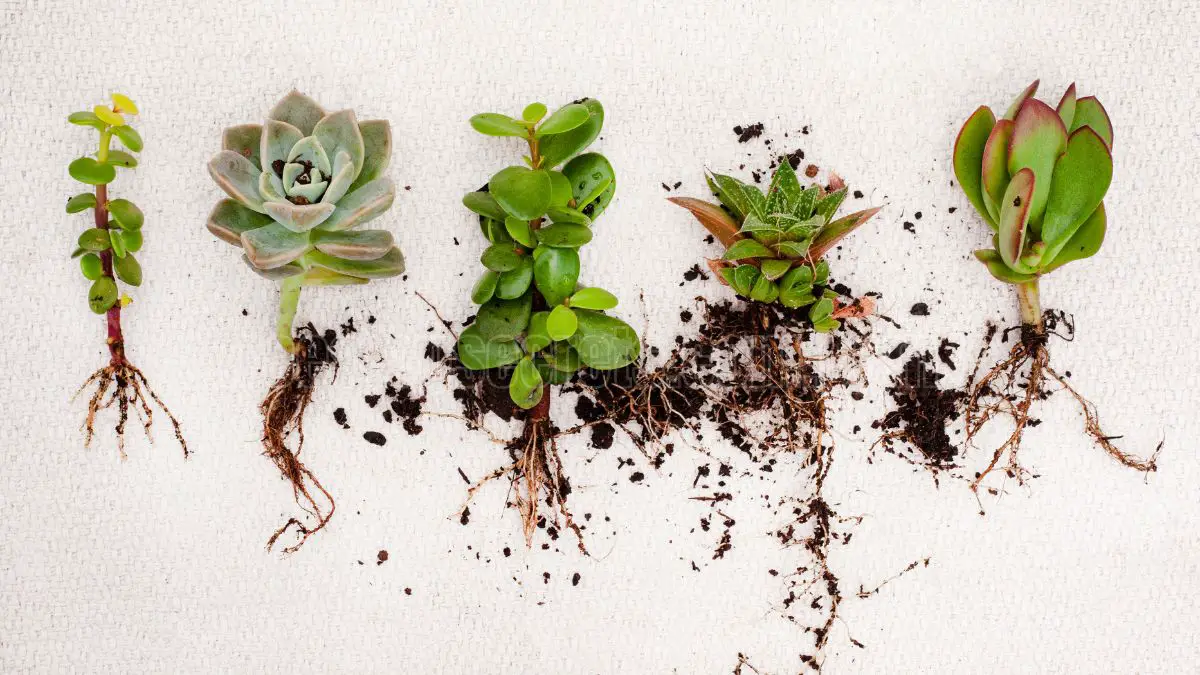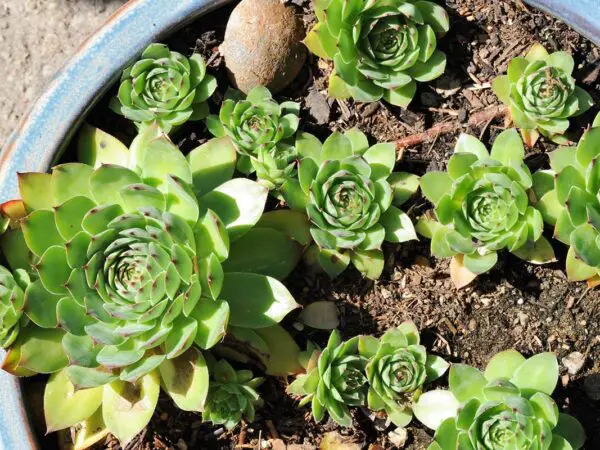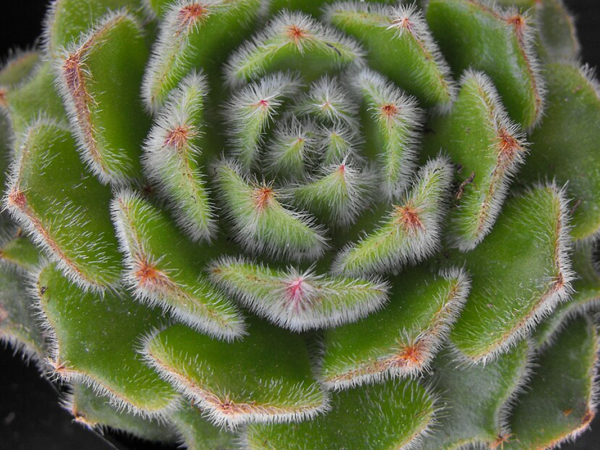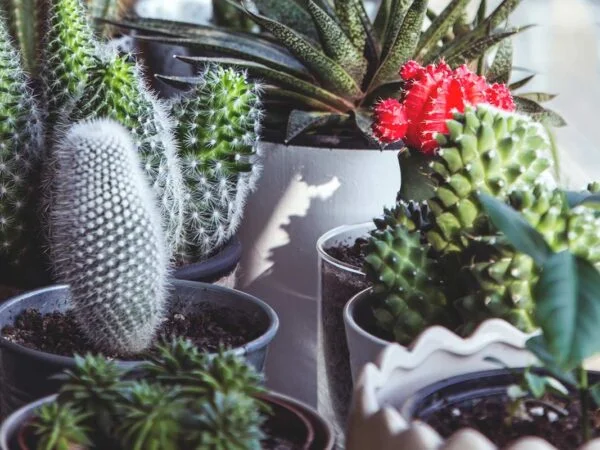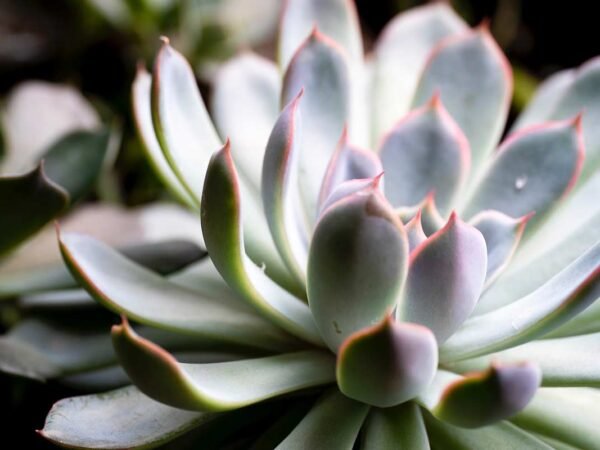Growing succulent plants from cuttings is simple and a great way to grow your collection. Since succulents are adapted to hot, dry climates, they are ideally suited for Los Angeles gardens both in and outdoors.
To begin with, a gardener will want to choose healthy leaves or stems from a current succulent plant, making sure there are no signs of disease. Allow the cuttings to callous over for a few days. This will allow them to create a natural protective callus before you plant them in well-draining soil.
Water consistently, but do not overwater or your cutting will rot. With just a little planning and preparation, you could be on your way to having a gorgeous garden full of healthy succulent plants in no time.
In the next few sections we’ll walk you through every step of the process in depth.
Key Takeaways
- Learn the difference between leaf and stem cuttings so that you can select the best propagation method for your succulents. Some varieties do much better when started from certain types of cuttings.
- Picking the right parts of the plant Choosing healthy sections is key to successful cuttings. Let them callus over for a few days so they don’t rot in the soil. Whether you’re making a hundred or just a few the key to preventing disease is using clean tools.
- To encourage healthy root growth, plant your cuttings into a well-draining soil mix specifically designed for succulents. Add perlite or sand to increase aeration and drainage.
- Don’t water your cuttings often, and pay close attention to the moisture level in the soil. Misting the leaves is a good way to add moisture without overdoing it.
- Offer your cuttings plenty of bright, indirect sunlight and keep them in a warm environment. Shield them from harsh conditions to promote vigorous development.
- Once rooted, move the cuttings on into larger pots and slowly acclimate them to brighter light as they get accustomed. Monitor for pests and diseases and protect them to keep your plants thriving.
How to Grow Succulent Plants from Cuttings
Growing succulent plants from cuttings is a satisfying and simple practice that lets passionate plant enthusiasts grow their collections at minimal expense. This part will help you to understand all the succulent propagation techniques.
What you need to succeed You’ll discover the extremely simple tools and step-by-step instructions for guaranteed success! By mastering the intricacies of this art, you’ll be well on your way to growing stunning, thriving succulents that will flourish in your indoor or outdoor oasis.
1. Understand Leaf vs. Stem Cuttings
When propagating succulents, knowing whether to take a leaf or a stem cutting is important. Leaf cuttings are when you remove a leaf from the main plant, let it dry out, and plant it. This technique is usually easier, but can require more time for roots to form.
For example, propagating Echeveria from leaves will likely produce stunning results, but it takes longer than stem cuttings. Conversely, stem cuttings, in which a section of the stem is severed, are generally more effective. They’re generally easier and quicker to root clones, as they have the advantages of the mother plant.
Species such as Crassula ovata, known as Jade Plant, and many types of Sedum are especially good choices for this approach. Determining the health of the source plant is crucial. A healthy, vibrant plant will produce healthier cuttings. Each approach comes with its own set of pros and cons.
It’s all about experimentation and understanding which succulent grows best from a cutting will give you the best return on your plants.
2. Prepare Your Cuttings Properly
Cuttings taken and prepared properly will take root easily. Choosing succulent cuttings will determine the success of your propagation.
Make sure whichever cutting you choose is cut from a healthy, pest-free plant. When taking a cutting, bring a sharp knife or craft scissors to make a precise cut. Peel off the bottom leaves on your stem cuttings to avoid rot.
Allow the cut ends to callous over for a few days. This drying out period is important as it allows for a callus to form, which goes a long way in preventing rot once you plant it. You may want to use rooting hormone to increase the likelihood of roots forming.
It’s not necessary, but it doesn’t hurt to give your cuttings a little extra support. Sanitize all tools before and throughout the cutting process. This will go a long way toward preventing diseases being introduced to your new plants.
3. Choose the Right Soil Mix
The soil mix you choose will greatly affect the success of your cuttings. A soil mix made for succulents, with an emphasis on good aeration, will help your plant develop healthy roots.
This is where commercial succulent mixes come in handy, as they are usually formulated with the proper nutrient profile and drainage in mind. If you would like to make your own mix, adding perlite or sand to regular potting soil will help with drainage.
It is best practice to test the soil moisture before planting. Soil that stays too soggy will cause cuttings to rot before they can root, and that’s the last thing you want to do! Soils rich in organic matter are excellent, but heavy soils that hold excessive moisture need to be skipped, because they can drown new roots.
Use the right kind of soil. A lighter, well-aerated succulent mix will help your cuttings grow robustly.
4. Watering Techniques for Cuttings
Watering might be the most complicated aspect of caring for succulent cuttings. At first, water lightly to avoid soaking the cuttings. Use a spray bottle to mist the leaves, providing the right amount of moisture directly to the plant.
This technique helps prevent the soil from getting saturated. Once roots are established, which typically takes just a few weeks (it varies by succulent type), you can start to increase the watering frequency. Keep a close eye on moisture levels in the soil.
It’s important to allow the soil to dry out thoroughly before watering again to help promote strong root growth. Signs of overwatering, like yellowing leaves or mushy stems, need to be dealt with right away. Increased watering needs to be stopped.
5. Optimal Environmental Conditions
Providing ideal conditions is a key to successful propagation. Put your new cuttings in bright, indirect light. This will protect them from the intense sun and promote their growth while preventing burning of the new, sensitive leaves.
A moderately warm temperature range is most beneficial, as this will promote both rooting and newfound growth. Protect your cuttings from the elements! Protect your plants from cold drafts and direct heat sources for happier, less stressed plants.
Humidity levels will factor into things. Increased humidity will help many succulent types as they root.
6. Early Signs of Rooting Success
About two to three weeks later, you can begin to check for early signs of rooting success. The presence of new growth or new leaves developing on the cutting is a good sign that your succulent cutting is starting to root.
You might notice small roots beginning to grow at the bottom of the cutting. If you notice an obvious change in the cutting’s color or texture, it could be another sign that the cutting is adjusting to conditions.
In all cases, patience is a virtue, and some succulent types are simply slower to root than others. Each variety has its own schedule, and knowing this is crucial to setting realistic expectations.
7. Post-Planting Care Tips
Once your cuttings have a healthy root structure, it’ll be time to consider transplanting them into bigger pots. This creates opportunity for sustainable growth and expansion. Keep giving them the bright indirect light but no direct sun until your new plants are hardened off.
Carefully acclimating plants to increased light levels will help them adapt and thrive. After planting, observe your succulents regularly for signs of pests or disease, and treat promptly to keep your plants thriving.
8. Troubleshooting Common Issues
Troubleshooting common issues will ensure you have happy and thriving plants. Signs of overwatering are yellowing leaves or mushy stems. If you start to see one or more of these symptoms, change your watering practices to compensate.
If you see signs of under-watering like wilting or shriveling, you’ll know to give your plant a little more water. Pest infestations are another threat that you should watch out for. Identifying pests or disease and using the right treatments or natural remedies will keep any outbreaks under control.
It is important to treat all fungal infections promptly, often through surgical intervention, such as cutting away infected portions of the plant to stop infection.
9. Innovative Propagation Techniques
If you’re interested in experimenting with alternative techniques, hydroponics is a fascinating option for propagating succulents. Using a variety of propagation containers, like glass jars or shallow trays, can be a fun experiment.
Other layering techniques are useful in propagating multiple cuttings at once. Specialized equipment, like propagation domes, offer more precise humidifying control. Even the most stubborn of succulent varieties will benefit tremendously from this extra humidity while they’re rooting.
10. Long-Term Growth Comparisons
Perhaps the most educational comparisons can be drawn between propagation methods over time. Keeping track of the health and growth vigor of succulents grown from leaves compared to stems over months or years can allow you to further fine-tune your technique.
By comparing the care needs for each style of cutting, we can inform the propagation we do next.
Propagating Succulent Cuttings in Water
Water propagation provides the unique benefit of being able to see the root development process in action. With the right know-how, this technique can increase your chances for successful succulent growth. Start out with the right cuttings. Healthy succulent plants are key to success. Only strong specimens will root successfully in water.
Watch your water quality as much as possible to avoid the build-up of bacteria that can cause rot and stop your cuttings from propagating.
1. Best Practices for Water Propagation
Let stem cuttings dry for one day before putting them in water. This step helps prevent your succulent cutting from rotting, since succulent cuttings need to develop a callus. Choose a stable, transparent container that will let you see the root development.
Changing the water every 7 days helps ensure it stays clean and well aerated, giving cuttings ideal conditions for rooting. Keep in a bright spot, but out of direct sun as this will heat up the water.
2. Choosing the Right Container
Choosing the right size container is important. It needs to provide sufficient room for roots but not be too big. Using clear containers will help you easily see your roots forming and water levels.
A wide, stable base prevents the containers from tipping over as the roots spread. Beautiful decorative containers can be eye-catching statement pieces while still serving a functional purpose.
3. Monitoring Water Levels and Quality
Monitor water levels to keep cuttings just covered without drowning them. If water becomes cloudy, replace it to ensure that your cuttings are in an environment conducive to healthy rooting. Distilled or rainwater can prevent chemicals you might find in tap water from interfering.
To prevent overwatering, watch your cuttings for signs of stress or decay and adjust the water level as needed.
4. Transitioning from Water to Soil
Give roots time. Wait until roots have grown a minimum of 2-3 inches before moving cuttings into soil. Once you’re ready to transition from water to soil, be sure to use a well-draining potting mix.
Once the cutting has rooted, delicately pot them up, spreading the roots outwards, and give them a light watering to help the soil set.
Environmental Considerations for Succulent Propagation
Understanding the environmental considerations for propagating plants like succulents will significantly enhance your success. Factors such as climate, indoor versus outdoor conditions, and seasonal changes greatly influence how well your succulent cuttings thrive.
1. Regional Climate Effects on Growth
Cold temperature swings at night can be particularly damaging. For example, if nights are too cold or days too hot, you may have difficulty producing strong cuttings. Conditions of high humidity increase risk for rot, as too much moisture is harmful prior to cuttings callousing.
It’s a good idea to look into which succulent varieties thrive in your climate. For instance, Echeveria might do best in warmer, drier climates, where Sedum can survive better in cooler conditions. Understanding local gardening customs and practices can further help to ensure you’re on the right track with the methods that have proven most effective within the region.
2. Adapting to Indoor vs. Outdoor Conditions
Providing consistent conditions indoors will promote healthy succulent growth. Make sure you have stable temperatures and light conditions. Outdoor cuttings need to be sheltered from extreme elements that could prevent the cuttings from rooting.
Pay close attention to indoor humidity levels. Placing fans or dehumidifiers in your propagation area will assist you in achieving the optimal moisture levels while preventing pests such as mealybugs.
3. Seasonal Changes and Their Impact
Seasonal changes create the biggest impact on succulents. Spring and early summer, when plants are in peak health and actively growing, is a great time to propagate. Modifying care routines, especially with regards to watering and light exposure, helps support cuttings with the best possible environment.
Seeing how various succulents react to seasonal changes will help you fine-tune your approach for better propagation results.
Conclusion
As you can see, propagating succulents from cuttings is simple, fun, and extremely gratifying. To begin with, select mature, healthy leaves/stems. Make clean cuts with sterile tools to prevent rot and disease. Be sure not to let the soil retain water and ensure they receive bright light to thrive. Be sure to monitor it closely, allowing the soil to dry out completely between watering.
Watch your conditions Succulents prefer dry, bright conditions. Help them out by providing what they love. With a little time and care, you’ll be able to watch your succulent cuttings grow strong and thrive. Most importantly, have fun growing your new plants to health!
Experiment with various succulent plants and find what works best for you. Take the plunge on this exciting adventure of propagation, and see your succulent collection flourish! Get going, and add some green to your world.
Frequently Asked Questions
How long does it take for succulent cuttings to root?
How long does it take for succulent cuttings to root? Of course, factors like temperature and humidity will significantly affect the progress of rooted succulents.
Can I grow succulents from any cutting?
Can any succulent be grown from a cutting? You can start with healthy, mature succulent leaves or stem cuttings from species such as Echeveria or Sedum.
Do I need to use rooting hormone?
Soaking the cut end of a succulent cutting in rooting hormone can be helpful, although it’s not required. Most succulents, especially when placed in succulent soil, do quite well without it.
How often should I water succulent cuttings?
How often should I water succulent cuttings? To ensure healthy new succulents, allow the succulent soil to dry out completely between waterings, as too much moisture can lead to rot in your cuttings.
What type of soil is best for succulent cuttings?
A well-draining soil mix, ideally designed for cacti and succulents, is essential for propagating plants. This prevents water from accumulating, which can cause root rot in new succulents.
Should I cover my cuttings after planting?
Should I cover my succulent cuttings after planting? They require good airflow around them to stave off mold and help new roots to form properly.
Can I propagate succulents indoors?
Can I propagate succulents indoors? Just make sure they get lots of bright, indirect light to grow new baby plants!
Image Source: Paid image from CANVA

